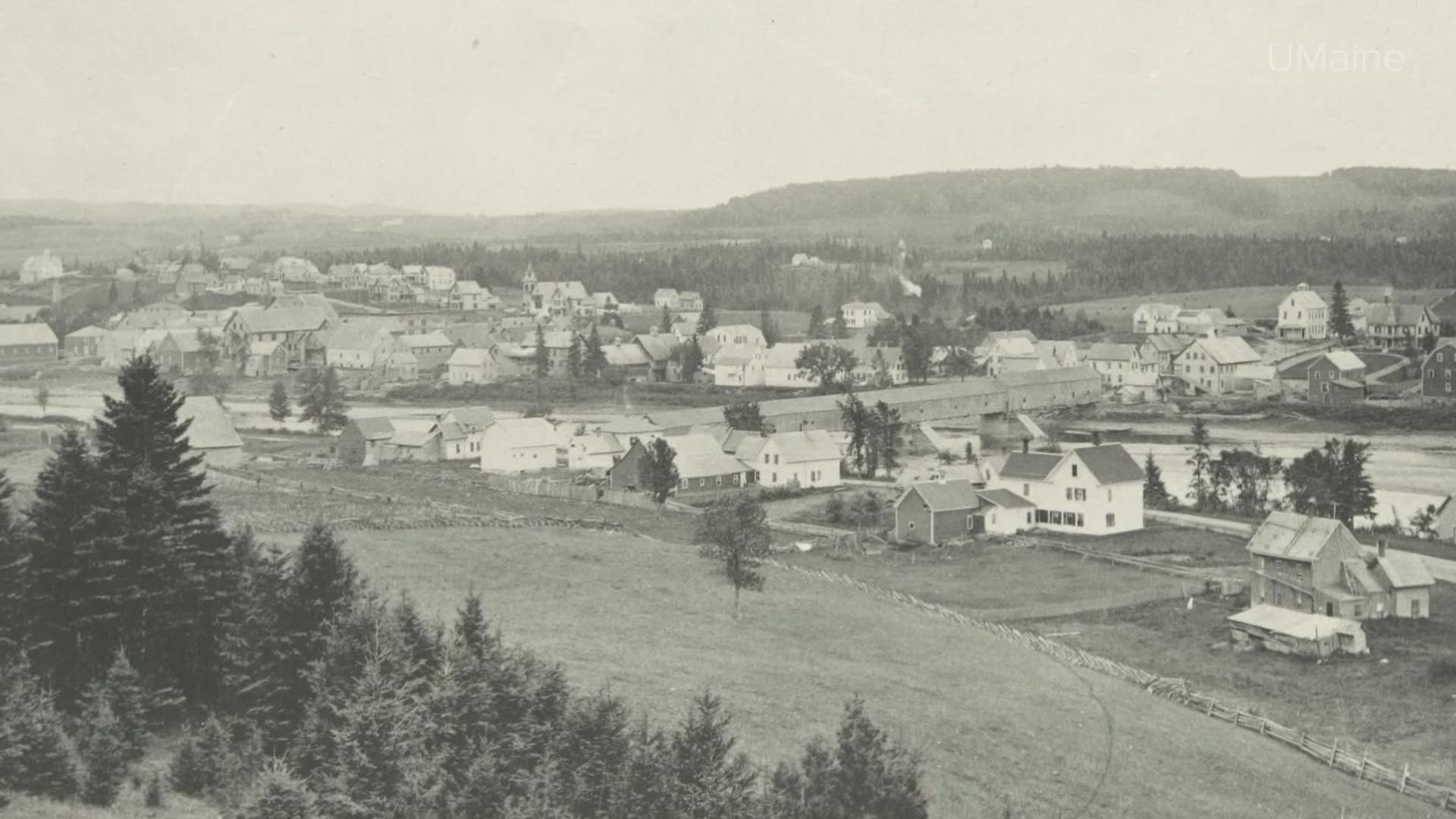FORT FAIRFIELD, Maine — Northern Maine looked very different just over 200 years ago.
“This was virgin forest,” Krista Luttrell, a researcher and genealogist in Maine, said. “Old growth trees that are probably double or triple the size they are now.”
At the turn of the 19th century, woods of spruce, fir and pine stood where potatoes now grow in Aroostook County’s sprawling fields.
And the Maine-Canada border would not be fixed until 1842.
In the first decades of the 1800s, this land was a frontier, an untamed place, brimming with opportunity and risk. It was a place that called to the restless or those who needed a fresh start; it called to Michael Russell.
Born in Ireland's County Tipperary, Michael joined the British Army, serving overseas. After what could charitably be described as an uneven service record, the army disbanded his regiment in New Brunswick. Nearly 2,000 miles from home, with a new wife and growing family to care for, Russell headed north for work, joining loggers along the Aroostook River.
“He starts working for mills, people who are harvesting lumber up in this area,” Dr. Kimberly Sebold, professor of history at the University of Maine at Presque Isle, said. “They left him and the tools and the horses and everything up here at Fort Fairfield. He was there to protect that.”
Sebold and Luttrell are chronicling stories of the immigrants who shaped Aroostook County. They say Michael Russell played a key part in Fort Fairfield’s early days.
“Had it not been for Michael Russell, there might not be a Fort Fairfield," Luttrell said.
At that time, river access was essential for the region’s lumber trade.
“They could get into the forest and cut,” Sebold said. “In spring they would travel the logs down the rivers.”
Anyone heading up or downriver was forced to navigate Aroostook Falls, and Russell saw an opportunity for profit. He moved his family to the area around 1823 and built a home right by the falls. People passing through needed to portage, carrying everything overland, before getting back on the river.
“Whoever controls the river, wins,” Luttrell said.
And according to family lore, Michael Russell was there to help, for a price.
“The running joke now is ‘Gangs of Aroostook,’” Luttrell said. “It really was like that.”
Sebold and Luttrell said the region’s first wave of Irish immigrants was composed of many former military members. Official documents from the time paint Russell as a “ringleader” among the growing Irish population.
“They've described Michael Russell and the Irishmen as being ‘dangerous,’” Luttrell said. “And ‘not safe to go by his house.'”
“I get the feeling that he was a bit of a renegade,” Richard Russell, Michael’s great-great-great-grandson, said.
Just like generations of his family, Richard Russell was raised in Fort Fairfield. And he grew up in a house on Russell Road, named for his family.
“They were all descendants of Russell's, the whole way out to the end of that road,” Russell said.
Inspired by stories from his grandmother, Richard Russell spent years delving into his own family history. More recently, he connected with Sebold and Luttrell, relishing their shared passion for documenting immigrant stories of Aroostook County. Each one now has a clear esteem for the character and spirit shown by those early settlers.
“They stuck together, and they seem to have helped each other quite a bit,” Russell said.
RELATED: Professor explores history of Irish immigrants in Maine in his first novel 'Murky Overhead'
“Determined. They had to be,” Luttrell said. “Otherwise they would not have survived.”
And that determination paid off. Fort Fairfield grew from a collection of homes, into a thriving community.
As Fort Fairfield grew, so too did Michael Russell's standing. Church records show Michael and his eldest son, John, frequently sponsored baptisms and marriages in the region.
“I think it really speaks to the kind of esteem they had within that community that was emerging,” Luttrell said.
As the years went on, famine in Ireland would drive further emigration. Many Irish families followed the path first trod by Michael Russell, finding a new home in Maine’s Fort Fairfield.
The town was incorporated in 1858. Just eight years later, Michael Russell died. But even today, more than a century and a half since his passing, Russell’s rakish nature still leaves an impression on those who documented his life's story.
“Michael was a badass,” Sebold said.
Michael Russell’s story is one of many Sebold and Luttrell are chronicling, of the people who helped to shape Aroostook County. You can read more through the StoryMaps service.

